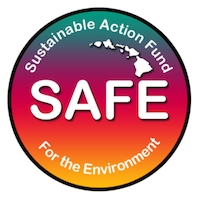Personal care products like shampoo, soap, lotion and especially sunscreen are decimating coral reefs and weakening their ability to mitigate the effects of climate change, scientists said Thursday at the International Coral Reef Symposium.
Oxybenzone and about 10 other chemicals are the real culprits, which is why groups have started ramping up campaigns to educate the public, service industries and government officials about the problem and what they can do about it.
“It’s a rare thing in an era of climate-change impacts to be able to say, ‘We can do something today,’” said Mirella Von Lindenfels, director of MarineSafe, which is working to reduce the number of toxic chemicals and plastics going into the ocean.

While an outright ban on oxybenzone is ultimately desired, she said huge improvements can happen literally overnight if people choose to wear a safer sunscreen like those with titanium oxide or zinc oxide.
Using less sunscreen is also crucial, she said, suggesting people wear long-sleeved clothing and rash guards to protect the bulk of their body from the sun. She recommended not using spray dispensers, which leave harmful residues.
Scientists believe coral is damaged when oxybenzone exceeds a concentration of 62 parts per trillion, which is roughly equivalent to one drop of water in 6.5 Olympic-sized swimming pools.
In Honolua Bay on Maui, oxybenzone was detected at nearly 2,000 parts per trillion.

Places like Hanauma Bay on Oahu and other popular tourist sites for snorkeling and swimming are also suffering, said Craig Downs of Haereticus Environmental Laboratory in Virginia. The University of Hawaii graduate has been a leading scientist in the field researching why corals have been dying, even in protected marine monuments.
“It’s pretty horrifying,” Downs said.
Seawater testing discovered concentrations of oxybenzone — which is found in over 3,500 sunscreen products — were 12 times higher in Hawaii and the Caribbean. The oxybenzone causes the coral to bleach at temperatures several degrees cooler and inhibits its ability to reproduce.
Worldwide, scientists estimate 8,000 to 16,000 tons of sunscreen is entering coral reefs each year.
It’s not just sunscreen washing off in the ocean, although that’s the biggest direct impact. Downs said 20 minutes after applying sunscreen with oxybenzone in it, the ingredient is detectable in your urine.

While some progress has been made by talking to government officials and members of the public, Downs said there’s hardly any funding for scientists to further study the issue and some companies manufacturing personal care products that use oxybenzone don’t want to talk about it.
“You’re going up against a huge industry,” he said. “They don’t return phone calls. They just put out bad press releases.”
Part of the problem, Downs suspects, is that it’s such a relatively new issue that they don’t know how to respond.
Last spring, the International Programme on the State of the Ocean, the International Union for Conservation of Nature and the World Parks Congress held a scientific workshop that looked at threats posed to marine habitats and ecosystems from pollution that comes from personal care products.
The group developed a code of conduct for scientists to recognize the problem, reduce the amount being used, and push for the replacement of oxybenzone products with less harmful alternatives. And the scientists agreed to undertake a peer review of the risk posed to the marine environment by such products.

The scientists are now encouraging the service industry — including snorkel and dive shops — to participate by providing alternatives to customers and sharing the information with others.
Beyond that, scientists are pushing governments to acknowledge it’s an issue for ocean health and personal well-being, adopt the code of conduct and take action through policy or legislation.
Hawaii lawmakers considered a bill earlier this year that would have required the University of Hawaii to conduct a study on the effects of sunscreen on Hawaii’s coral reefs.
It cleared the House Ocean, Marine Resources and Hawaiian Affairs Committee, chaired by Rep. Kaniela Ing, but died in the Higher Education Committee, chaired by Rep. Isaac Choy.
Von Lindenfels said a ban on oxybenzone would be “immensely helpful.”
In the meantime, she’s working on a campaign established by the International Programme on the State of the Ocean to establish MarineSafe labels for products that undergo independent testing and certification so that consumers can more easily know what to buy. She expects the campaign to be up and running in three months, backed by a campaign to create MarineSafe zones.
“We actually feel it’s tipping point time,” she said.
By

Leave a Reply